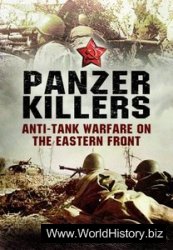In north-west Europe all chances of a decisive victory over Nazi Germany in 1944 ended with the reverse at Arnhem and the delay in opening the port of Antwerp. A winter campaign was now inevitable. In Italy, Kesselring’s Operation "Herbstnebel” (Autumn Fog), to shorten his line by withdrawing to the Alps, was peremptorily turned down by Hitler. Alexander’s long-term proposal for an enveloping attack by landing in Yugoslavia could make no immediate contribution to Eisenhower’s present predicament and indeed proved to be a pipe dream that for political reasons alone would never have been authorised. So it was the mixture as before, with Hitler still obsessed with the Balkans, Ke.'=selring
Continued on page 2136
2128
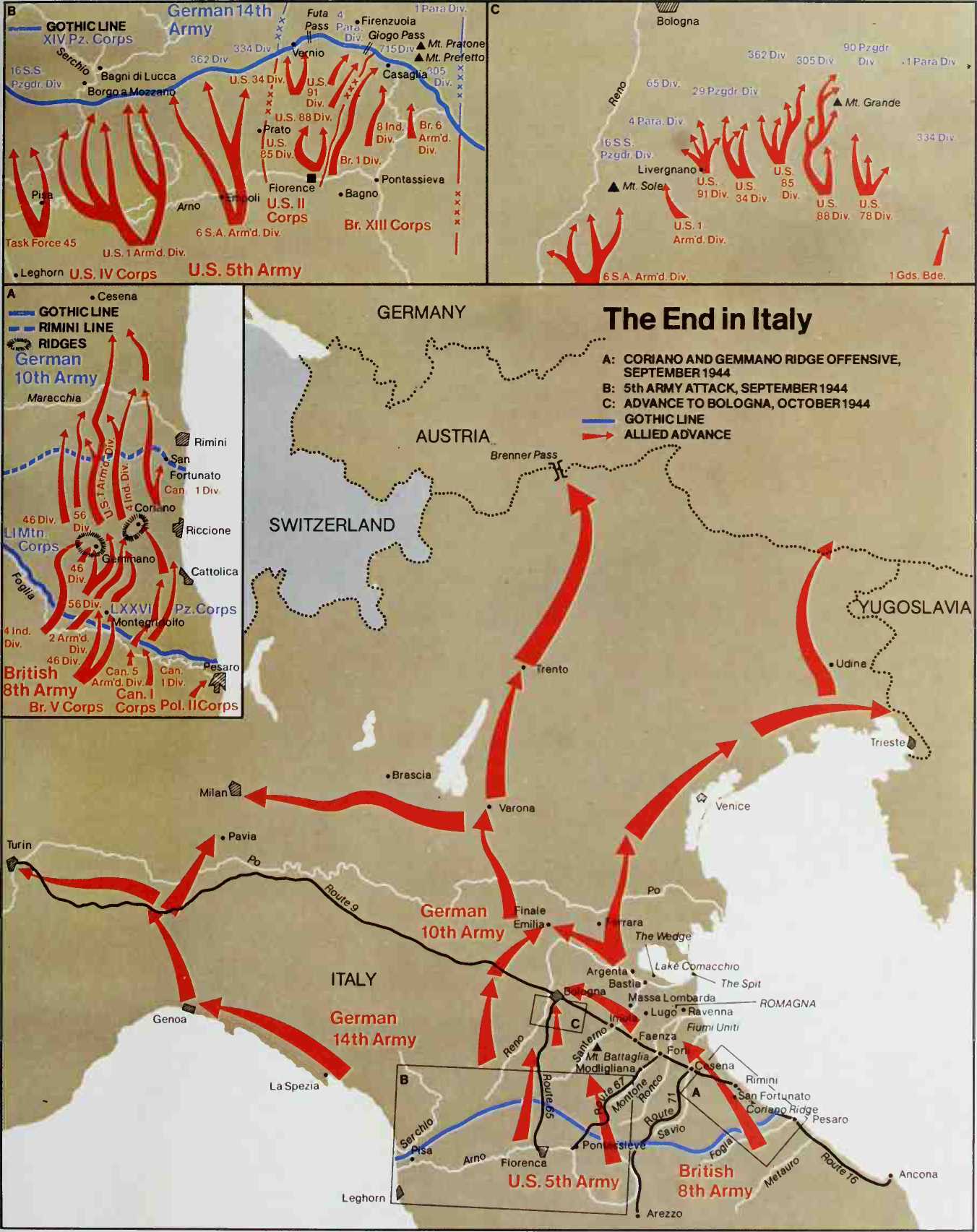
2129
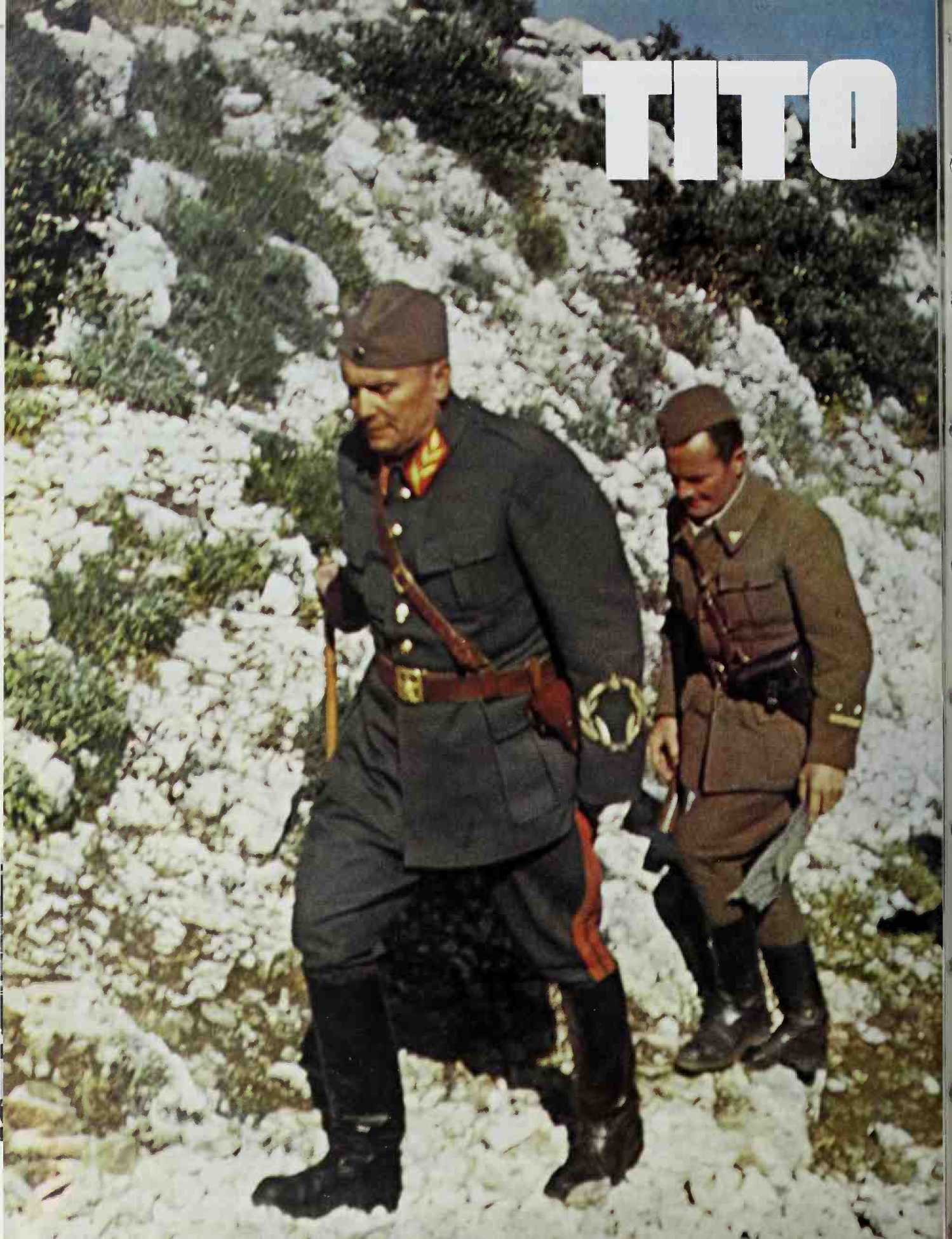



On April 17, 1941, the Yugoslav Army capitulated to the Germans. Resistance to the Axis forces began early, but it was divided between Mihailovic’s royalists and Tito’s Communists. Tito formed a nation-wide resistance group, known as the Partisans, and played a major role in freeing Yugoslavia of the German occupation forces.
Tito’s long term aim was the Communist control of a united
Yugoslavia. Communist policy at this time was directed from Russia, but the practical organisation was left to Tito. The party organisation he had set up just before the war, which covered all regions of Yugoslavia, had now been disrupted. In April and May, he summoned the Yugoslav Communist Party Central Committee to meetings to decide on a plan of campaign. Orders went out to Communists in all parts of the country to collect secret stockpiles of weapons. The call for the revolt of the Yugoslav peoples did not come until July 4. however, after the Germans had attacked Russia, and this led to an intensive campaign of attacks all over the country. Tito had sent trained men out to the country, usually to the regions where they were born, to lead the uprisings.
The task of organising and co-
< Tito, head of the Yugoslav partisan movement, with an aide in the mountains of northern Yugoslavia in 1945.
V Partisans prepare to blow the bridge at Niksic. 40 miles east of Dubrovnik.
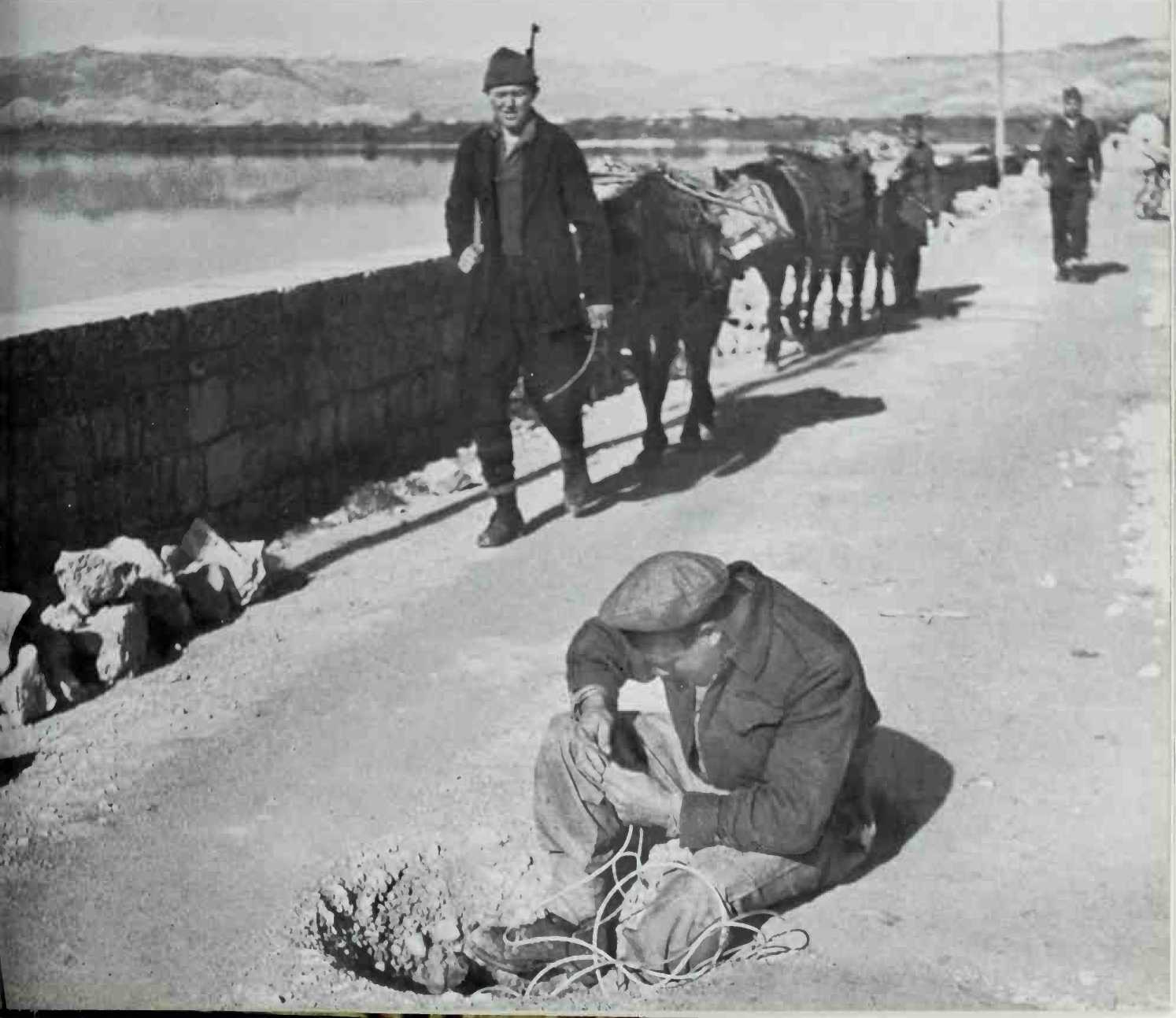
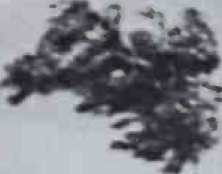
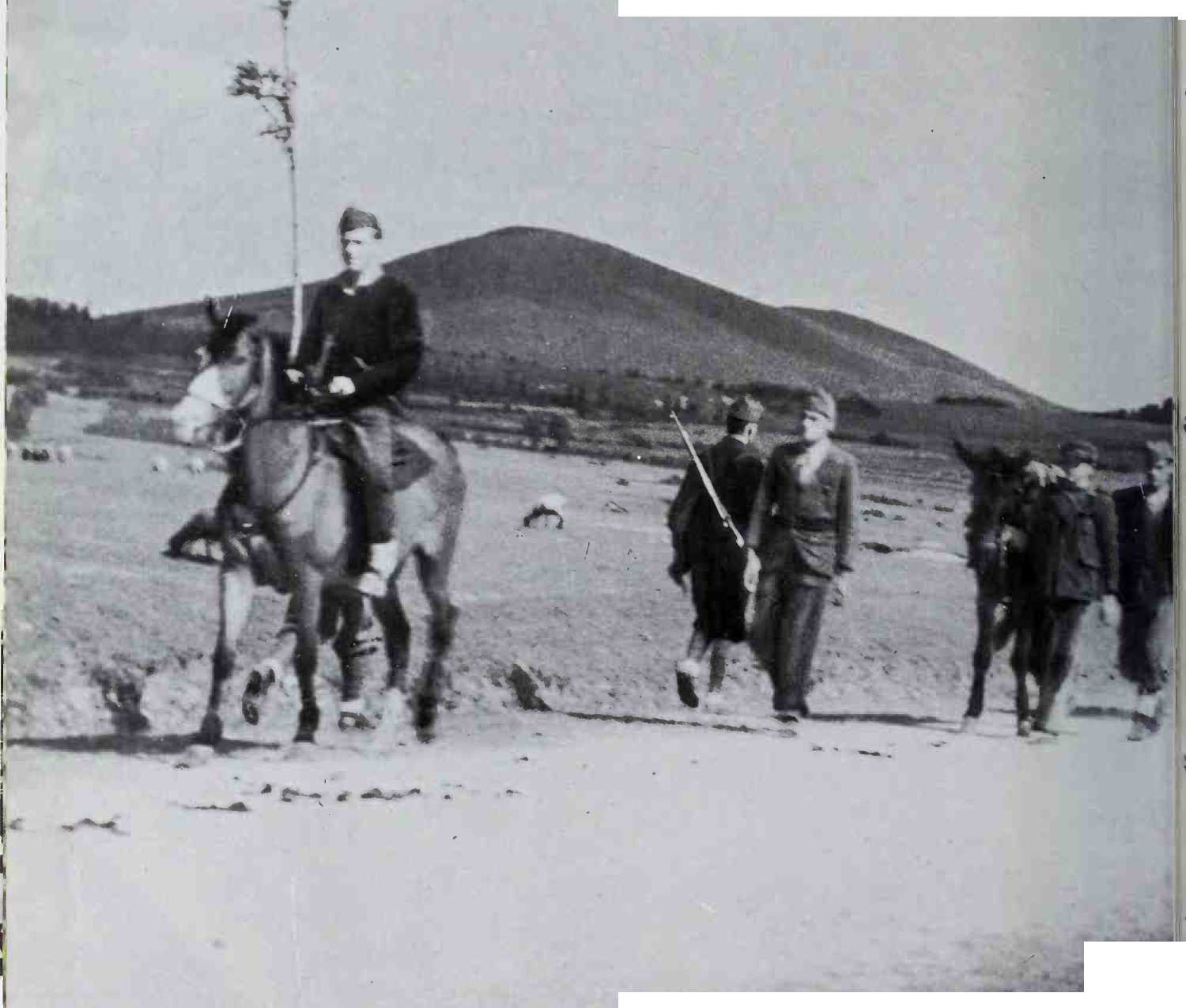
V Men of a Croatian Proletarian Brigade in May 1942.
> German infantry crouch behind a leichter Panzerspahwagen Sd. Kfz 222 armoured car in action against Bosnian partisans. '
V > There was no sexual discrimination among the partisans: this girl was a front line soldier wounded in the field after killing 20 Germans.
Ordinating the dispersed groups of partisans was difficult and dangerous, calling for a high degree of ability. Tito proved himself equal to it.
Clandestine operations were to he maintained in enemy-occupied towns, while a guerrilla war of movement was waged against the Germans in the countryside, with the aim of tying down as many enemy troops as possible over as wide an area as possible. The Germans could not hope to control the whole of the countryside, and Tito instructed his forces to avoid direct clashes with a superior enemy, and, if necessary, to retreat before the Germans.
Tito’s efforts were extremely successful, and the Germans were driven out of much of Serbia by mid-September. Partisan activity appealed to the national spirit, and to the love of freedom of many who were not Communists. Support for the revolts also increased after General Keitel ordered the execution of 50-100 Communists in reprisal for the death of any German soldier.
Tito’s attention was diverted from the enemy when he tried and failed to reach a compromise with Mihailovic, the leader of the other important resistance group, the Cetniks. In the struggle between the two men to gain control of the complete resistance movement, open clashes occurred. This dis-
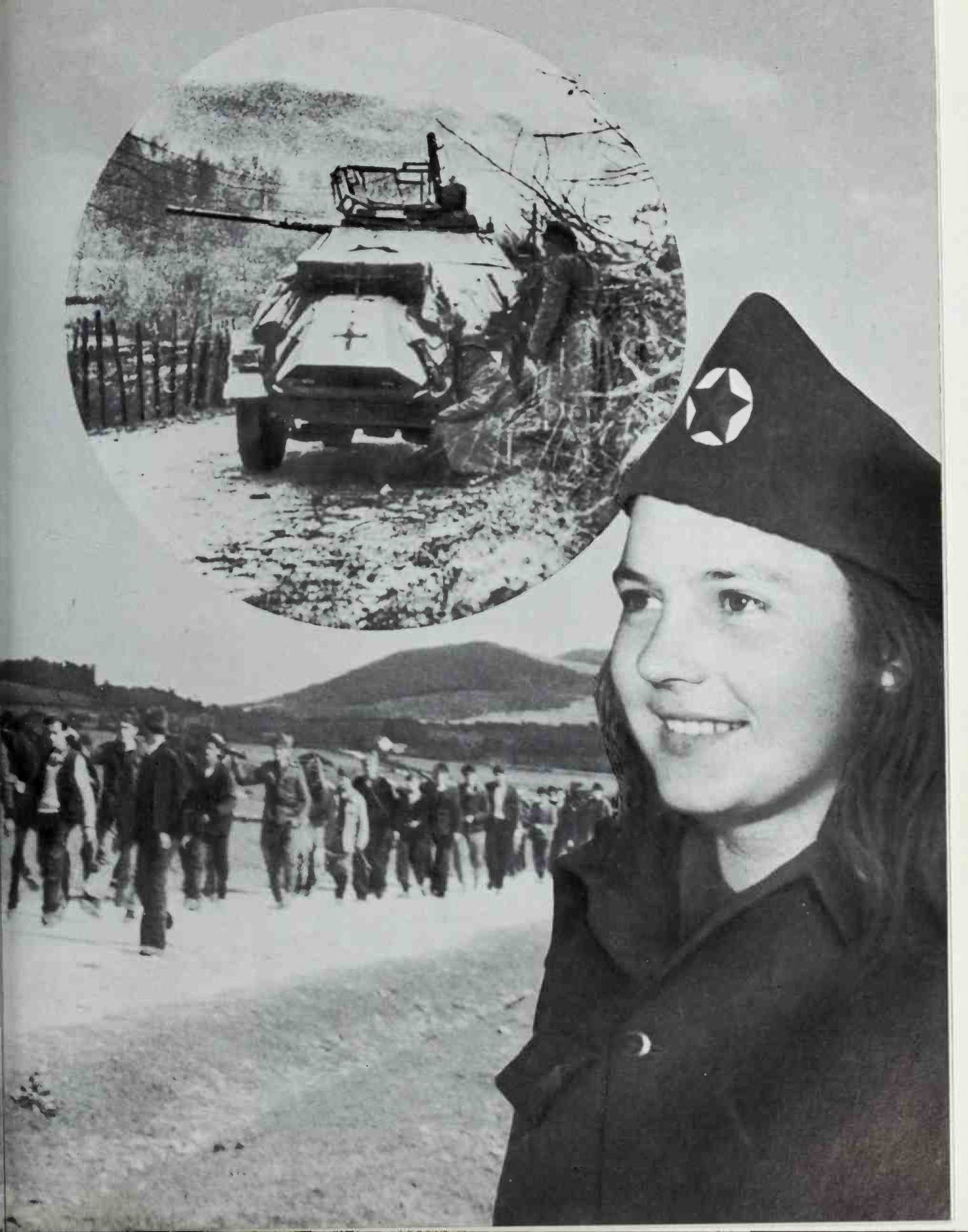
D - H
I* <' H ’
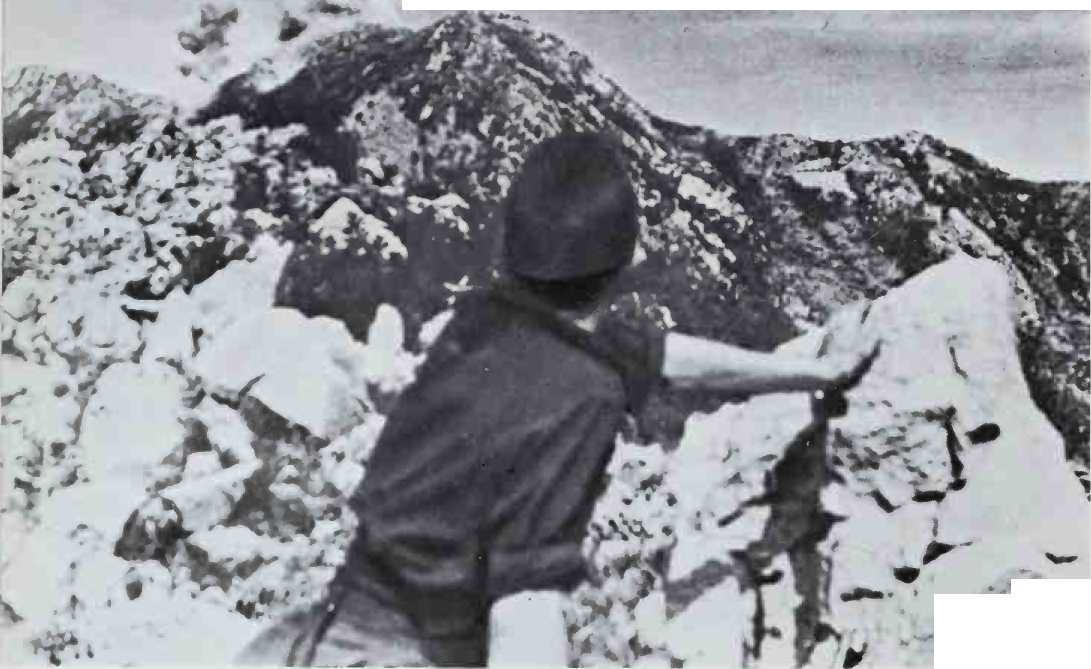
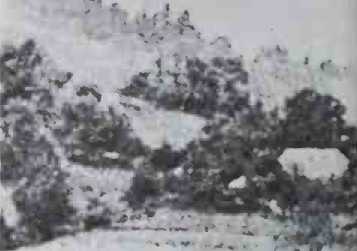
A Appalling terrain over which to fight, but it was the Yugoslavs’ country and they knew how to use it in their struggle against the Germans. Here a German soldier watches a Stuka bombardment of a suspected partisan stronghold.
> Partisans unload supplies flown into Niksic airfield by the British from Italy.
> > Wounded partisans being evacuated to the mountains to recuperate.

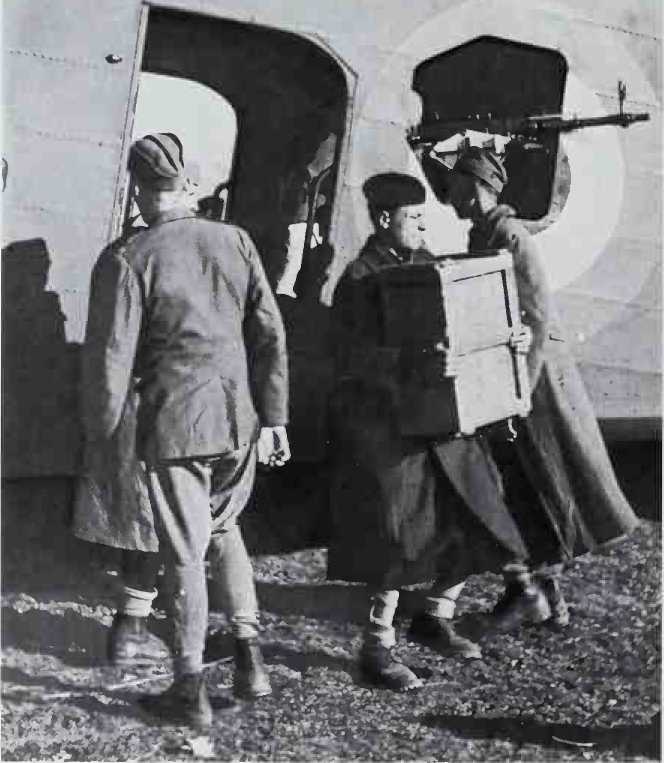

Sension allowed the Germans to move in again. They launched their first attack in western Serbia in September 1941, and by December, most of Serbia was under Axis control.
At this time, enlistment to the partisans was on a voluntary basis and detachments had been local units fighting to defend their own home regions. Tito now needed a stable, trained armv and
2134
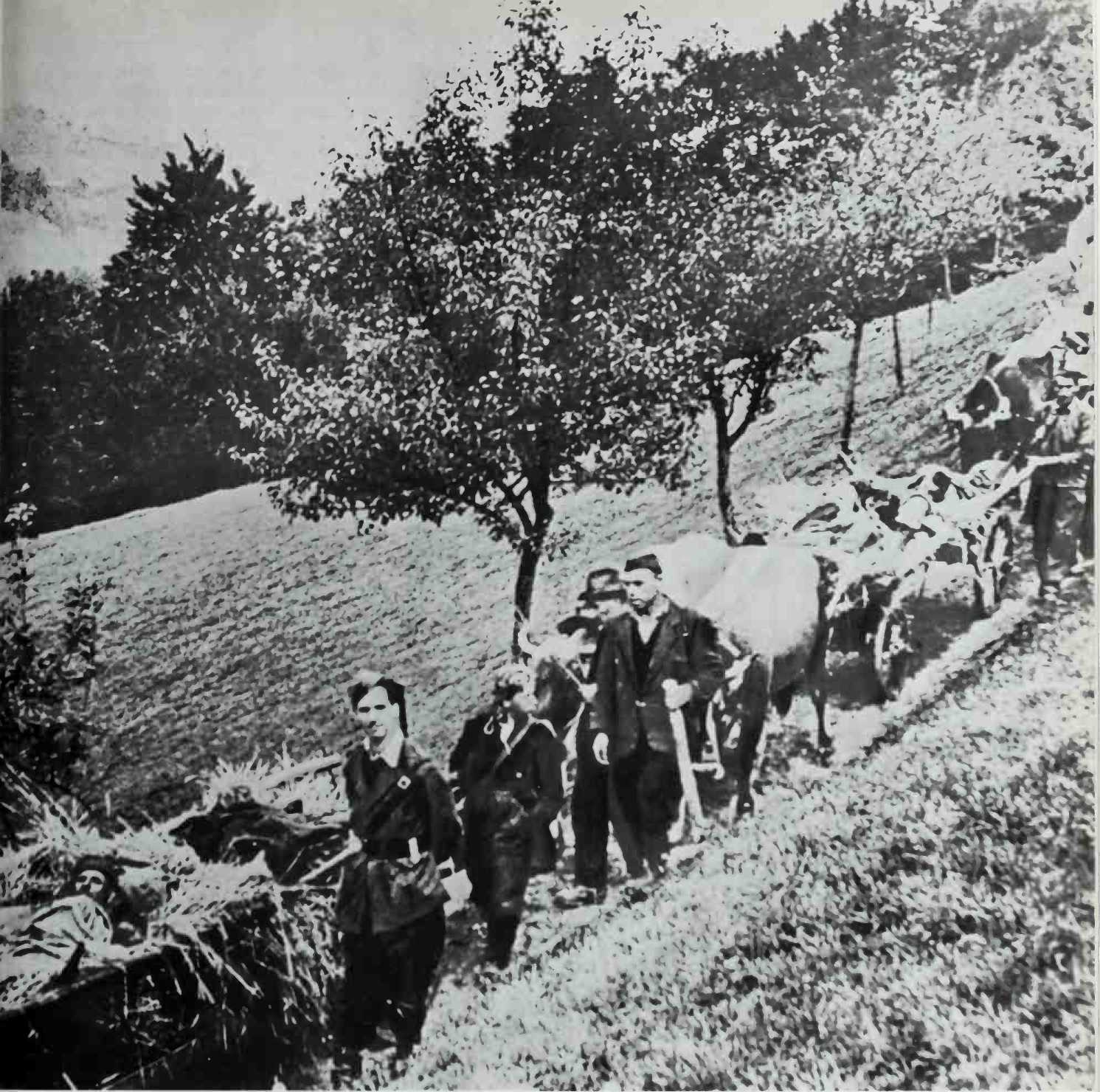
Strike force to execute the war of movement. Accordingly, the 1st Proletarian Shock Brigade was formed in December 1941, and the 2nd during March the following year. By the end of November 1942, Tito’s army had 28 brigades, each with 3-4,000 men and women. This People’s Liberation Army was used increasingly for offensive action, and had its own training school, organisations for women and youths, and also a naval detachment, Bach brigade had a political commissar as well as a commanding officer. Although the brigades were short of ammunition and uniforms, the partisans were very disciplined. All their supplies were paid for, and a high moral standard governed relations between men and women partisans.
Not until late 1943 did the
Allies send him aid, and before that, Tito and the partisans had to fight ofl’five German otTensives. From the outset, the enemy embarked on a policy of deliberate extermination of the wounded and the sick as a weapon against the fighting morale of the rebel hands. This was contrary to the tradition of care of the wounded implicit in the code of Balkan guerrilla warfare. Tito's order was to save the wounded at all costs. .As they were waging a war of mobility, the sick and the wounded had to accompany the army on the move.
By May 1944, Tito had the full support of the. Allies, and the Germans were in full retreat by the end of. August. In March 1945, Tito set up a provisional government '
Minist(
2135
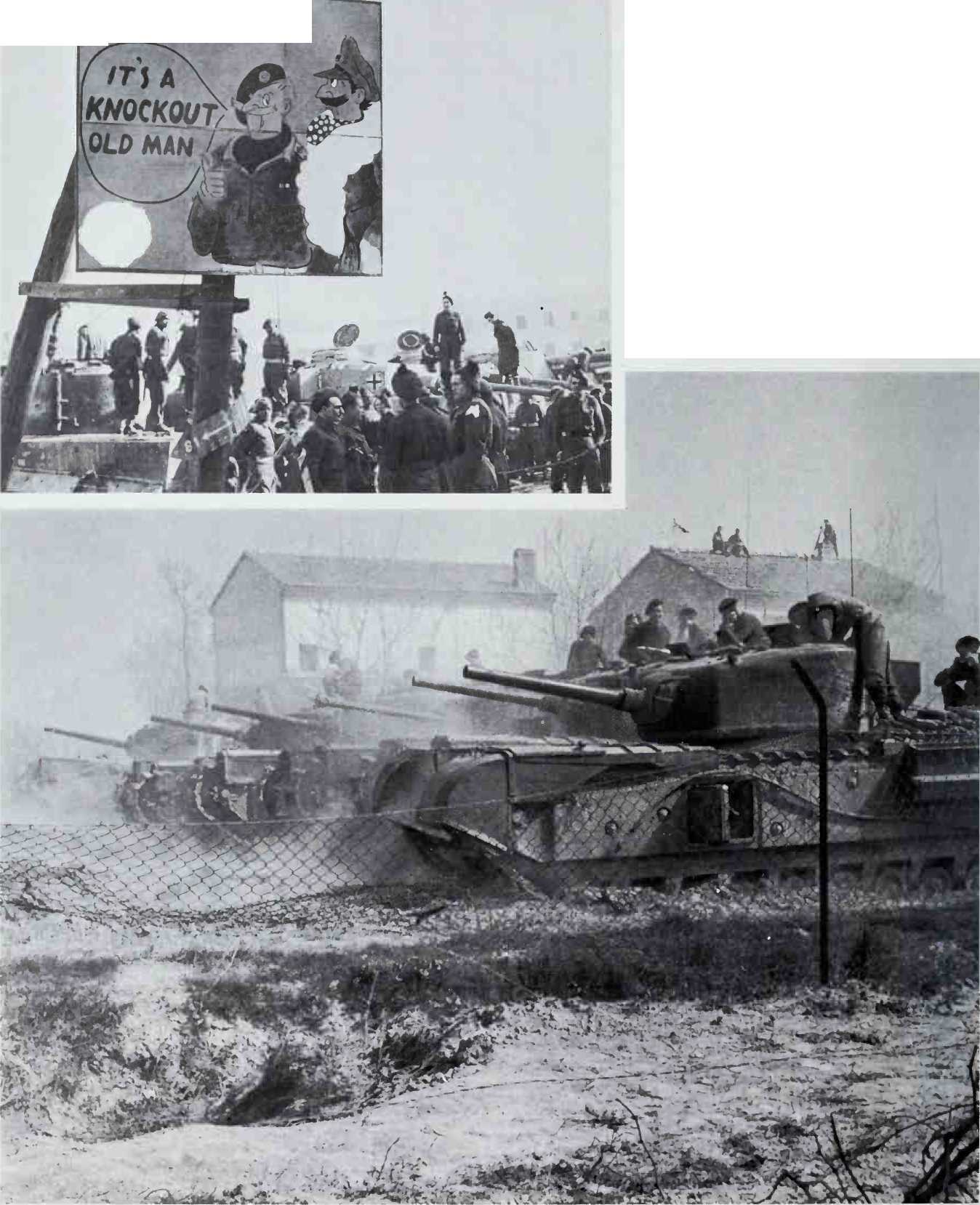
2136
Over-sensitive of his coastal flank on the Adriatic, hut ordered to fight where he stood, and Alexander with dwindling resources committed to a continuation of the battle of attrition against the grain of the country and in the most adverse climatic conditions. Furthermore, the had weather was seriously limiting the use of Allied air power, at a time when the Allies were facing a world-wide shortage of certain types of artillery ammunition as a result of the extraordinarily sanguine and premature decision to set hack production.
The fighting continued until early January, with the Allies aiming to reach Ravenna and break the line of the San-terno before reviewing the thrust to Bologna. In the north "Ponterforce”,
Consisting of Canadian and British armoured units and named after its commander, co-operating with "Popski’s Private Army” of desert fame, reached the banks of the Fiumi Uniti and Ravenna itself fell to I Canadian Corps. Soon the Canadians reached the southern tip of Lake Comacchio, but it was only after a fierce and costly battle that they were able to force the Germans back behind the line of the Senio. Astride Route 9, attacking westwards, V Corps captured Faenza, and in the foothills south of the road the Poles fought forward to the upper reaches of the Senio. At this point the 5th Army was stood-to at 48 hours’ notice on December 22 to resume the attack.
But the weather again broke and by a quirk of fate Mussolini, despised by friend and foe alike, and seeking a "spectacular” success for his newly formed divisions, made a last throw in a losing game. These two divisions, the "Monte Rosa” and the "Italia” Bersaglieri Divisions, led by the German 148th Division, now launched a counter-attack on the extreme left flank of the 5th Army. This advance towards the vital port of Leghorn came on the very day that virtually the whole of the 5th Army was concentrated and poised ready to attack Bologna. Only the U. S. 92nd Division, posted around Bagni di Lucca, was in position to meet the attack down the wild and romantic valley of the Serchio. The arrival of 8th Indian Division on December 25 was only just in time to stop a complete breakthrough, as the leading German units overran the two main defence lines before being held and driven back by the Indians. Meanwhile this threat to the main supply base had caused two more of the 5th Army’s divisions to be switched from the main battle area, and with heavy snow falling in the mountains, Alexander gave the order for both armies to pass to the defensive.




 World History
World History





